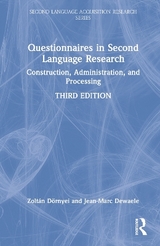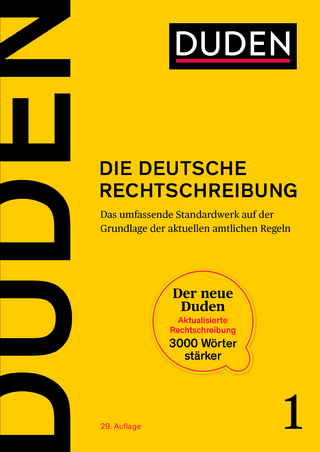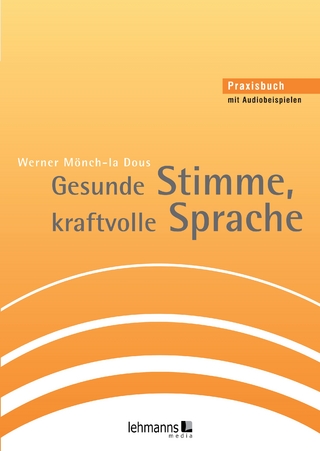
Questionnaires in Second Language Research
Routledge (Verlag)
978-0-415-99819-2 (ISBN)
- Titel erscheint in neuer Auflage
- Artikel merken
Questionnaires in Second Language Research: Construction, Administration, and Processing is the first guide in the second language field devoted to the question of how to produce and use questionnaires as reliable and valid research instruments. It offers a thorough overview of the theory of questionnaire design, administration, and processing, made accessible by concrete, real-life second language research applications. This Second Edition features a new chapter on how an actual scientific instrument was developed using the theoretical guidelines in the book, and new sections on translating questionnaires and collecting survey data on the Internet. Researchers and students in second language studies, applied linguistics, and TESOL programs will find this book invaluable, and it can also be used as a textbook for courses in quantitative research methodology and survey research in linguistics, psychology, and education departments.
Zoltán Dörnyei is Professor of Psycholinguistics in the School of English Studies at the University of Nottingham, UK. Tatsuya Taguchi is a PhD candidate in the School of English Studies at the University of Nottingham, UK.
Introduction
1. Questionnaires in Second Language Research
1.1 What are ‘questionnaires’ and what do they measure?
1.2 Why use questionnaires and why not?
1.3 Questionnaires in quantitative and qualitative research
2. Constructing the Questionnaire
2.1 General features
2.2 The main parts of a questionnaire
2.3 Appropriate sampling of the questionnaire content and the significance of ‘multi-item scales’
2.4 ‘Closed-ended’ questionnaire items
2.5 Open-ended questions
2.6 How to write good items
2.7 Grouping and sequencing items
2.8 Translating the questionnaire
2.9 Computer programs for constructing questionnaires
2.10 Piloting the questionnaire and conducting item analysis
3. Administering the Questionnaire
3.1 Selecting the sample
3.2 Main types of questionnaire administration
3.3 Strategies to increase the quality and quantity of participant response
3.4 Questionnaire administration, confidentiality, and other ethical issues
4. Processing Questionnaire Data
4.1 Coding questionnaire data
4.2 Inputting the data
4.3 Processing closed questions
4.4 Content analysis of open-ended questions
4.5 Computer programs for processing questionnaire data
4.6 Summarizing and reporting questionnaire data
4.7 Complementing questionnaire data with other information
5. Illustration: Developing a Motivation Questionnaire
5.1 Construction of the initial questionnaire
5.2 Translating and initial piloting
5.3 Final piloting and item analysis
5.4 The final version of the Japanese questionnaire and post hoc item analysis
5.5 Adapting the questionnaire for use in China and Iran
Conclusion and Checklist
References
Appendix A: Combined List of the Items Included in the Questionnaires Discussed in Chapter 5
Appendix B: The Final Version of the Questionnaires Used in Japan, China and Iran
Appendix C: Selected List of Published L2 Questionnaires
| Erscheint lt. Verlag | 22.12.2009 |
|---|---|
| Reihe/Serie | Second Language Acquisition Research Series |
| Verlagsort | London |
| Sprache | englisch |
| Maße | 152 x 229 mm |
| Gewicht | 408 g |
| Themenwelt | Geisteswissenschaften ► Sprach- / Literaturwissenschaft ► Sprachwissenschaft |
| ISBN-10 | 0-415-99819-0 / 0415998190 |
| ISBN-13 | 978-0-415-99819-2 / 9780415998192 |
| Zustand | Neuware |
| Informationen gemäß Produktsicherheitsverordnung (GPSR) | |
| Haben Sie eine Frage zum Produkt? |
aus dem Bereich



